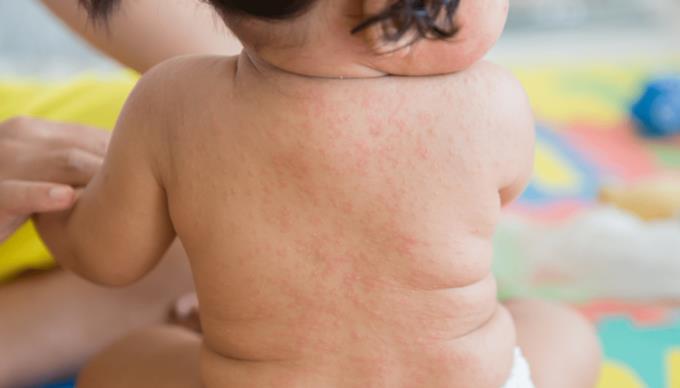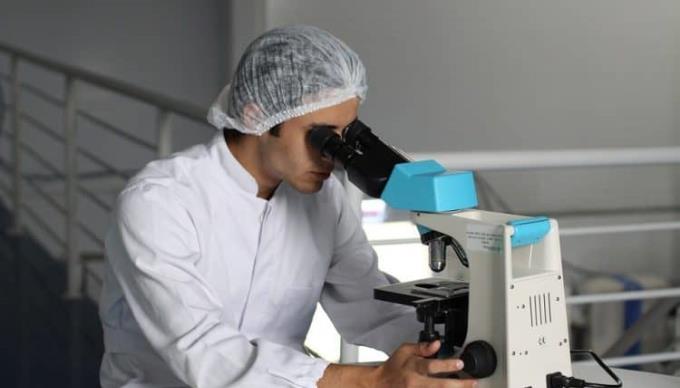Ways to determine an infants caloric needs

Learn how to determine your baby’s caloric needs, including the calories in breast milk and formula, to ensure your infant gets the right nutrition for healthy growth.
What is Kawasaki disease? First of all, understand that this is a rare but serious illness.
Kawasaki is also known as mucosal lymph node syndrome . This is inflammation of the arteries, veins, and capillaries. It also affects the lymph nodes and causes unusual symptoms in the patient's nose, mouth and throat.
The disease is common in children under 5 years old, especially children aged 1-2 years. In most cases, babies will recover within a few days of treatment without any serious problems. The disease also rarely recurs. But if not treated actively, Kawasaki can cause serious heart disease. This is a rare disease but once acquired and cured, the patient needs to be re-examined for life.
The cause of the disease has not been determined by medicine. But researchers on this disease believe that it is the result of the resonance of genetic factors and negative impacts from the environment.

At each stage, the disease will manifest different symptoms.
In the early stages, signs of Kawasaki disease can last up to 2 weeks, including:
Fever that persists for 5 days or more
Systemic rash
Red eyes
Red, swollen lips
The tongue looks blistering, red like the color of a ripe strawberry
Swelling of hands and feet
Redness on the palms of the hands and feet
Heart problems can also show up during this time.

Late symptoms will begin within 2 weeks of having a fever. The skin on the person's hands and feet may be flaky. Some people may experience joint pain or acute arthritis.
Other signs include:
Vomit
Gallbladder dilatation
Temporary hearing loss.
Disease symptoms may appear incomplete. Therefore, you should bring the patient to the hospital as soon as you notice one of the abnormal signs mentioned above.

There is no specific test method to diagnose the disease. The doctor will base his or her symptoms on the patient's body and use a method of elimination for diseases with similar signs, such as:
Fever caused by bacterial infections
Rash fever
Rheumatoid arthritis
Measles
Allergy
The doctor may also order the patient for additional tests to check if the disease is affecting the heart and to what extent. These tests include:
An echocardiogram is a medical procedure that uses sound waves to create images of the heart and the arteries in the body. This procedure may need to be done several times to check how Kawasaki disease has affected the heart over time.
This procedure is performed so that the doctor has more basis to rule out other diseases that are causing similar symptoms. With Kawasaki disease, the number of leukocytes increases . Meanwhile, the number of red blood cells was abnormally low.
A chest x-ray will show you pictures of the heart and lungs. This procedure should be done to check for signs of pneumonia or heart failure.
This procedure records the electrical activity of the heart so that the doctor notices any abnormalities.
When a patient has a high fever that persists for 5 days or more with signs of peeling skin on the hands and feet, Kawasaki disease is more likely.

As soon as a diagnosis of Kawasaki disease becomes available, the patient should be actively treated as quickly as possible to prevent the possibility of the disease affecting the heart.
During treatment, your doctor will give the patient an intravenous infusion of antibodies within 10 days of the fever. Transmission time takes about 12 hours. Then, the patient was given a dose of aspirin every day for the next 4 days.
Children with Kawasaki disease need to continue taking aspirin to prevent the possibility of blood clots forming for about 6-8 weeks after the fever is gone.
Early treatment is important in preventing serious heart problems. Medical experts also believe that if diagnosed and cured before the fifth day of fever, the duration of treatment will be shortened and patients will also have a higher resistance to the disease.
For patients with late detection, the duration of treatment may be longer to prevent the risk of blockage of the arteries or heart attack. In this case, the course of treatment requires the patient to take antibiotics and aspirin every day until the echocardiogram shows no signs of abnormalities. This time can take from 6-8 weeks or longer depending on the ability of each patient to respond to treatment.
aFamilyToday Health hopes that the information in this article has helped you know what Kawasaki disease is to be more proactive in taking care of yourself and your family. Although it is a rare disease, if not actively treated, the disease will cause significant effects on the cardiovascular system . These effects can even cause death. On the contrary, if the patient is treated according to the doctor's regimen, within 48 hours after treatment, the patient will be free of fever and can continue to monitor the health at home. Patients need to be re-examined according to the doctor's appointment to know the recovery status of the body.
Learn how to determine your baby’s caloric needs, including the calories in breast milk and formula, to ensure your infant gets the right nutrition for healthy growth.
Discover the top 5 smartest dog breeds in the world, including Border Collie, Poodle, German Shepherd, Golden Retriever, and Doberman Pinscher. Learn about their unique traits and why they are considered the most intelligent dogs.
Discover 7 nutritious and delicious ways to cook egg porridge for babies, including recipes with cheese, pumpkin, tomato, and more. Learn how to prepare baby-friendly egg porridge with our expert tips.
After a series of medical measures they obtained a complete human vascular system profile.
Watermelon is one of the fruits that many people love, not only cheap but also delicious, nutritious and refreshing in the summer. To get delicious watermelon pieces, show off your housewives, your artistic talents to cut beautiful pieces of watermelon.
aFamilyToday Health - The digestive system and body in each baby is different. Parents need to recognize notes to deal with when babies have a food allergy!
Babies need many factors for perfect development. aFamilyToday Health shares with parents things to keep in mind when babies are 8 weeks old so that parents can take care of their babies the best!
Babies need many factors for perfect development. aFamilyToday Health shares with parents things to keep in mind when babies are 18 weeks so that parents can take care of their babies the best!
Babies need many factors for perfect development. aFamilyToday Health shares with parents things to keep in mind when babies are 28 weeks old so that parents can take care of their babies the best!
Babies need many factors for perfect development. aFamilyToday Health shares with parents things to keep in mind when babies are 32 weeks old so that parents can take care of their babies the best!








